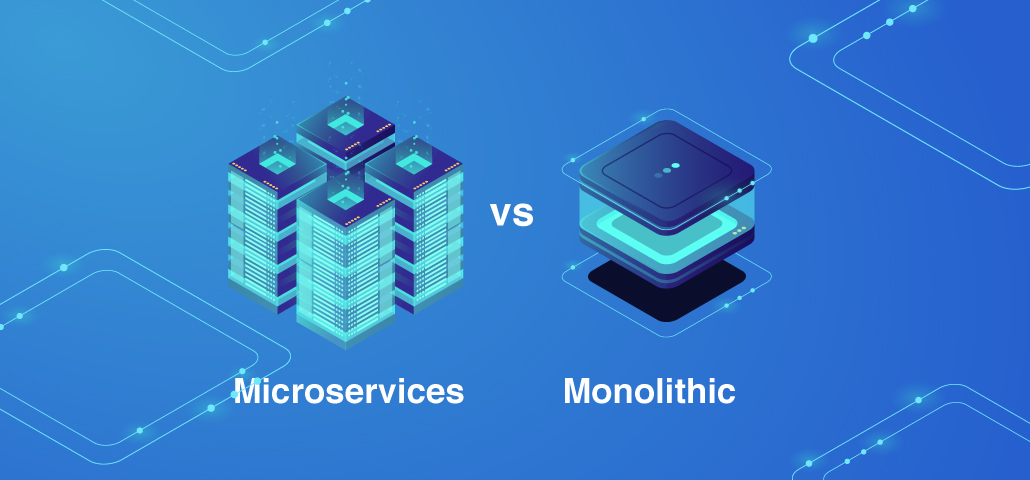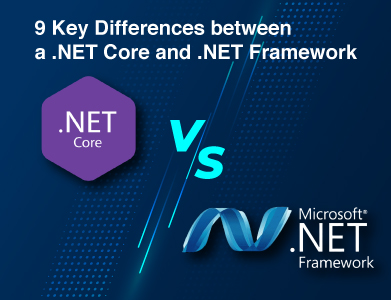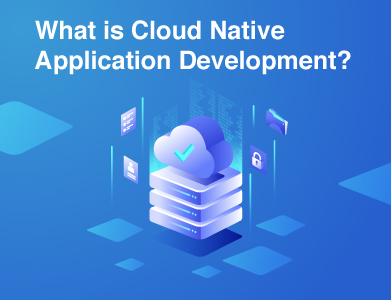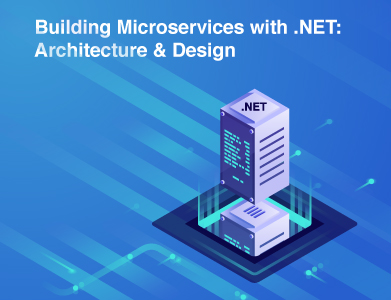When it comes to black Friday sales no one can do it better than Walmart. However, did you know they were unable to offer these sales for 2 consecutive years?
In 2012, they were getting about 6 million page views per minute. This amount of traffic was impossible for their legacy system (designed around laptops, desktops and monolithic) to handle. This made them go for a microservice architect leading to zero downtime during black Friday and other sales days.
So, what are monolithic and microservice architecture software development and how do they differ?

By the end of this article, you will learn the meaning of both and the difference between monolithic architecture vs microservices architecture. You will also know which model is best for your business.
Monolithic Architecture: The Traditional Approach
Monolithic means large and glacial. So, a monolithic architecture is the process of developing and deploying an application using a single code base.
So, to make any change in an application built under this architect you need to update the entire stack. This whole process is time-consuming, making updates a challenge in Monolithic vs Microservices.
Uber initially built their application under this architecture. All their business functions (matching drivers, and riders, taking care of billing and payment etc.) were built under a single codebase.
Benefits
- Deployment: As the entire application including business logic, user interference and database is deployed as a single unit, you can deploy the application faster in this architecture. The process is straightforward and does not need coordination of multiple services or components in monolithic vs microservices.
- Development: If you want to develop a complete application and market it in less time this model is the best. As with a monolith, even a team of few IT members can build an entire application. This makes it an ideal choice for startups and small businesses.
- Seamless Debugging and Testing: As there is a single indivisible unit, the application is easier to debug and test. You can run end-to-end testing more efficiently in a single tired application.
Challenges
- Complex: Building a home is easy, however as you start expanding it and adding floors above it, the foundation begins to shake. The same goes for this architecture. Developing applications is comparatively easy. However, as your business grows, and function expands it becomes difficult to manage a large codebase under one application.
- Interdependent Components: Suppose you have an e-commerce application built under this architecture, so all the functions (product descriptions, Wishlist, payment, shopping cart, etc.) are dependent. If the payment function breaks down, the whole app will be unusable so people can’t even browse your products till the payment function is fixed.
- Barrier to Adopt: If your competitor introduces a new function in their application and you want to include the same. Unless you dismantle the entire application you cannot do that making the entire process time-consuming.
When to Use
Using monolithic architecture is a good option;
- If you want to develop a simple application. Your developer can build it faster as they can build the application under a single code base.
- If you want to develop an application faster.
- If you are looking to test a business idea and aim to spend less initially.
Microservices Architecture: The Modern Approach
In microservices architecture software development, the software is divided into small independent services. These independent services are developed, maintained and deployed separately. As the services are independent, they communicate with each other via APIs. An individual team manages each microservice, making updating, testing, deploying and scaling software less complex under this architecture.
When Uber started to grow, it shifted to microservices architecture software development due to monolithic challenges such as scalability and tightly coupled components. Since then, uber has had a microservice architecture with around 4000 microservices.
Benefits
- Scalability: As the services are loosely connected, you can scale them independently. So, if one service needs more resources due to high traffic, you can scale it without affecting other services. Leading to cost savings and better resource allocation.
- Technology Diversity: You can use different programming languages, frameworks and tools in developing microservices, allowing you flexibility and innovation.
- Fault Isolation: If any of the services fail, it will not affect the application. Plus, you can contain failures easily within the affected area. This increases the reliability of software.
- Continuous Deployment: You can update and deploy Microservices Development Services independently allowing a faster release cycle and microservices development process.
Challenges
- More Complex: As you divide the application into small independent microservices, setting up connections between the databases becomes essential. Also, it becomes difficult to manage and maintain the system. You may need a high level of expertise in the Microservices Development Services.
- Time-Consuming Testing: You need to test each of the services individually and then after they work properly, you need to merge them to test how they work as a whole. This can be a complex process.
- Difficult to Monitor: Monitoring microservices can be tough because of the large number of services and their dynamic nature. So, identifying and diagnosing problems becomes hard and can require specialized monitoring tools and procedures.
When to Use
Using microservices architecture software development is a good option;
- If you need to develop scalable and complex applications as microservices architecture, make it easier to develop software with multiple modules and you can add new functions easily.
- If you want to come up with new features frequently, microservice accelerates the time to market as your team need not redesign the entire software.
- You want choice in selecting the technology
So, this was all about monolithic and microservices architecture and monolith vs microservices pros and cons. Now, let’s see how these two architectures differ from each other.
Monolithic Architecture vs Microservices Architecture
Comparing Monolithic and Microservices Architecture, we find key differences in various aspects:
Development Process:
- Monolithic architecture simplifies initial development for small-scale applications due to a single integrated code base, leading to shorter development cycles.
- Conversely, microservices architecture allows teams to focus on specific services, such as the checkout page or product catalog, enabling faster development and specialized expertise.
Deployment:
- Monolithic applications are easier to deploy since they use a single code base. However, updating any feature requires redeploying the entire monolith, which can be time-consuming.
- Microservices, although complex to deploy, benefit from containerization, reducing complexity.
Scalability:
- Scaling monolithic applications requires deploying the entire software, wasting resources if only one part needs more resources.
- In contrast, microservices allow for independent scaling of each component, making it resource efficient.
Resilience:
- Monolithic architectures are less resilient due to tight coupling, where a failure in one component can affect the entire application.
- Microservices, with their loose coupling, ensure that issues in one component do not impact others, enhancing resilience.
Time to Market:
- For simple applications with small teams, monolithic architecture allows for a quicker time to market.
- However, for larger teams with dynamic requirements, microservices offer parallel development and flexibility, speeding up the time to market.
Testing:
- Monolithic architectures facilitate end-to-end testing, whereas microservices require individual testing of each independent service.
Troubleshooting:
- Troubleshooting large monolithic architectures can be challenging due to dependencies among components.
- Microservices, with their interdependencies, make tracing problems and troubleshooting easier.
Monolithic Architecture vs Microservices Architecture
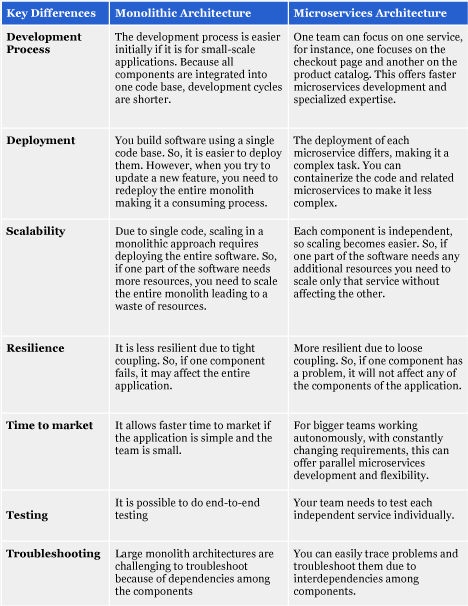
To Sum Up
Monolithic architecture vs Microservices architecture represent two distinct approaches to software design, each with its advantages and trade-offs.
If you are just starting and need to develop a simple application, go for a monolithic architecture. However, as your application grows, it may become increasingly challenging to scale the software using a monolithic approach.
In contrast, Microservices Development Services offers a more flexible structure, allowing you to scale individual components of your application.
However, implementing a microservices architecture requires comprehensive planning and can be a more complex undertaking. Ultimately, the choice depends on the specific requirements and constraints of your project.
If you need more help with your decision or want to migrate from a Monolithic to a Microservices approach, we're here to lend a hand. With half a decade of experience under our belts, we can help you unlock the full potential of Microservices.
Contact Us Now to Get Started
FAQ
01
Is it possible to use a hybrid of monolithic and microservices architecture?
Yes, it is possible to use a hybrid approach that combines aspects of both monolithic and microservices architectures. In a hybrid approach, core functionality remains with a monolithic structure. However, parts of the software are designed as microservices.
02
What is an example of a monolithic application?
An example of a monolithic application is Netflix, which started with a monolithic architecture. As the company grew, it transitioned to a microservices architecture for better efficiency. Other companies like Amazon, Facebook and Spotify also moved from monolithic to microservices for similar reasons.
03
Is Django monolithic or microservices?
Django traditionally follows a monolithic Model-View-Template (MVT) pattern. However, it can also support microservices-based applications through its modular design and integration capabilities.
04
What is the difference between microservices and monolithic in 2024?
Monolithic apps have a single codebase and database, while microservices consist of multiple independent services. Monoliths are harder to scale and update, whereas microservices allow for independent scaling and deployment of services. Monoliths have a single point of failure, while microservices are more resilient with failures isolated to individual services.
05
How to convert monolithic to microservices?
First, identify the different services within the monolith. Next, break down the monolith into separate microservices and set up communication between them using APIs. Refactor the app to use a distributed architecture. Finally, use DevOps practices like continuous integration and deployment.
06
Can we use Kubernetes for monolithic applications?
Yes, Kubernetes provides a platform to deploy, scale, and manage containerized applications, whether they are monolithic or microservices-based.
07
What is the difference between Kubernetes for monolith and microservices?
For monoliths, Kubernetes provides a way to containerize and manage the entire application as a single unit. For microservices, Kubernetes enables the deployment, scaling, and management of individual services as separate containers, allowing for greater flexibility.
